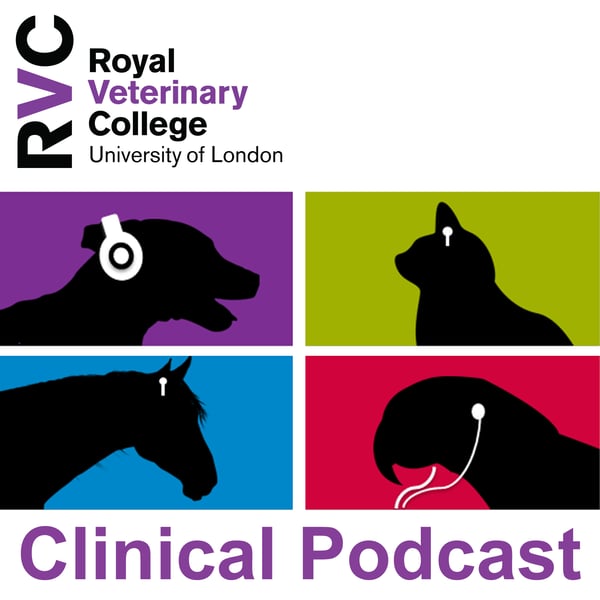40 Coxofemoral luxation
Veterinary Clinical Podcasts
Dominic Barfield
5 • 643 Ratings
🗓️ 18 May 2017
⏱️ 26 minutes
🧾️ Download transcript
Summary
In this podcast, we talk to Elvin Kulendra, lecturer in orthopaedic surgery here at the RVC about coxofemoral luxation in dogs. The most common luxation in dogs and the majority are related to trauma. Elvin talks about initial assessment, the major body systems, and gait and neurological function, which radiographs to take and steps on how to perform a closed reduction, which should be successful 50% of the time (higher in cats). Allegedly there are 20 ways to perform an open reduction, though we don’t talk about all of them. Cage rest regardless of reduction technique for at least 4 weeks, lead walking only (no jumping, stairs etc.).
A review on coxofemoral luxations: https://www.ncbi.nlm.nih.gov/pubmed/15943127
If you have any comments about this podcast, please get in touch (email [email protected]; tweet @dombarfield or @RoyalVetCollege using #rvcpod; or use the RVC facebook page). We would greatly appreciate your time to rate us on iTunes and write a review.
Transcript
Click on a timestamp to play from that location
| 0:00.0 | Good day. Dominic Barfield here. This is the RVC Clinical Podcast. Thank you for listening and thank you for |
| 0:04.5 | subscribing. We would be grateful if you could go to iTunes and leave us a five-star review. That would be great. |
| 0:09.4 | Obviously other stars are available, but five stars would definitely make us at top of the tree, which is probably where you'd like to discuss, comment, suggestions on the show, please tweet me at Don Barfield or email me at D Barfield at RBC.combeau-Uk. |
| 0:25.4 | So today we've managed to regain an audience with Dr. Alvin Clundra, a lecturer in orthopaedic surgery here at the RBC about management of hip dislocation in dogs. |
| 0:34.4 | This is our second attempt as recording the pod, so many thanks for your |
| 0:37.5 | patients, Alvin. Not a problem, done. |
| 0:40.2 | So we're going to try and go for some things to consider how to approach them, |
| 0:43.5 | elmistlings and maybe the 20 ways of surgically managing them, |
| 0:46.9 | or maybe just a few of those 20 ways. So thanks again, |
| 0:49.8 | Elvin. And so we'll get straight into it. |
| 0:53.4 | So first I'll attempt to refer to this as cocephemeral luxation rather than anything else. |
| 1:00.8 | And maybe you could ask, am I right, that the most common luxation in dogs is from following trauma, |
| 1:10.0 | and mainly that's being sort of hit by a car in the |
| 1:12.1 | hypnosis locations? |
| 1:13.4 | Yeah, so often we see these these type of injuries following trauma. |
| 1:17.6 | So although as orthopedic surgeons we concentrate on the limbs, it's important to look at these patients globally |
| 1:25.6 | and make sure they don't have any concurrent injuries as well. And as you say, so typically we see this following trawl, and typically |
| 1:32.5 | the lusation is a cranial dorsal. And for a traumatic lusation to occur, it's important to |
| 1:41.3 | recognize that at least two out of the three main stabilizers have had to have been damaged. |
| 1:48.0 | So when we talk about the major stabilizers of the hip joint, we're talking about the joint capsule, the dorslas tabular rim, and the ligament of the femoral head or the Terry's ligament. |
| 1:57.0 | Okay, so when you're assessing these patients, obviously we need to have a look at any sort |
| 2:03.8 | of trauma patient as their major body systems, their heart brains and lungs and make sure |
... |
Please login to see the full transcript.
Disclaimer: The podcast and artwork embedded on this page are from Dominic Barfield, and are the property of its owner and not affiliated with or endorsed by Tapesearch.
Generated transcripts are the property of Dominic Barfield and are distributed freely under the Fair Use doctrine. Transcripts generated by Tapesearch are not guaranteed to be accurate.
Copyright © Tapesearch 2025.

